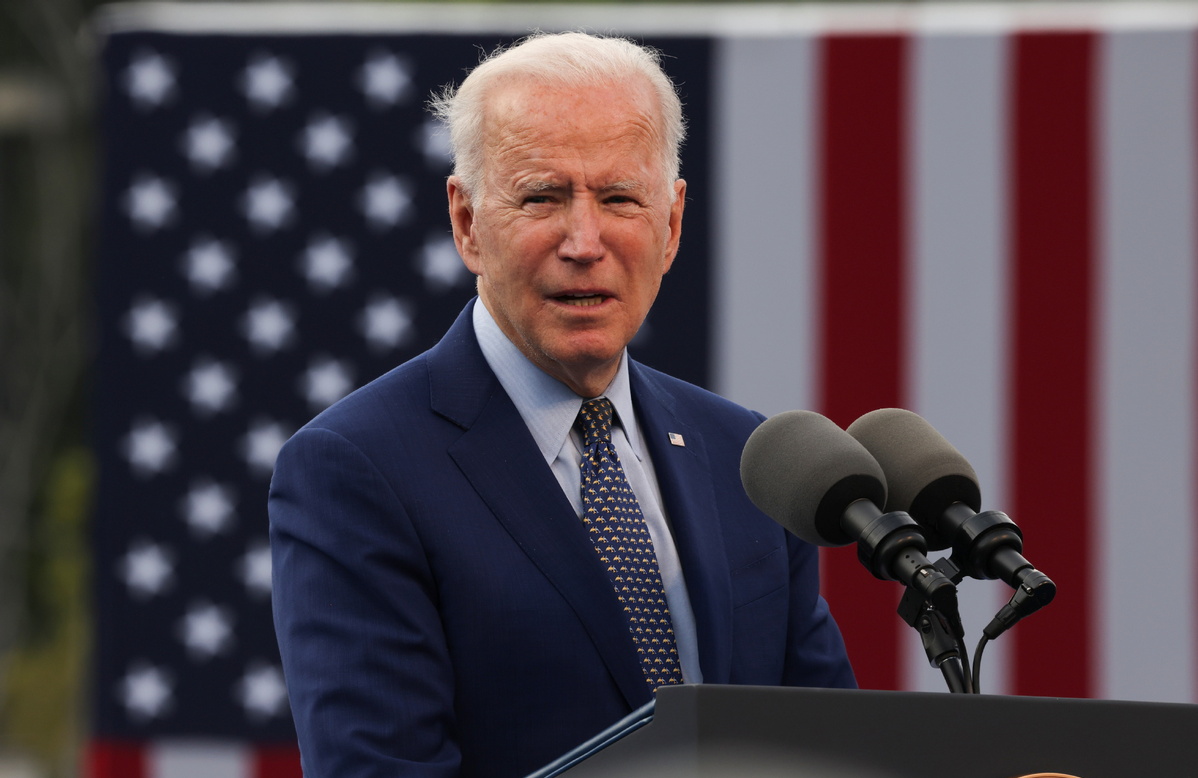US to phase out gases in refrigerators, AC units
By AI HEPING in New York | China Daily Global | Updated: 2021-05-04 11:11

In the first Biden administration rule aimed at combating climate change, the Environmental Protection Agency on Monday proposed slashing the use of greenhouse gases used in refrigerators and air conditioners by 85 percent over the next 15 years.
The move to restrict the use of hydrofluorocarbons (HFCs) is the target of an international push for phasing them out and the first move by the Biden administration to directly cut a greenhouse gas.
The effort is part of President Joe Biden's strategy to cut the country's greenhouse gas emissions by 50-52 percent below 2005 levels by 2030, which it announced at its Earth Day summit last month.
"EPA is taking a major action to help keep global temperature rise in check," agency Administrator Michael Regan said in a statement, adding that the action will spur "manufacturing of new climate-safe products".
The proposal would create a process for cutting the use of HFCs, the first step toward meeting a 2020 mandate from Congress that was part of a $2 trillion spending and COVID-19 aid package. The proposed rule entails "allocations" for each HFC producer and importer that ensure the US stays on course to meet the phase-out targets.
The proposal also would put the US on track to meet an international agreement to phase out HFCs. At a meeting in Rwanda in 2016, the US, China and India were among 197 countries to agree to aim for an 80 percent reduction in their use by 2045. President Donald Trump didn't put the agreement — called the Kigali Amendment – before the Senate for ratification. Biden has pledged to send the Kigali amendment to the Senate for approval.
The proposal will be the first time the federal government has set national limits on HFCs, which were used to replace ozone-depleting chlorofluorocarbons in the 1980s but have turned out to be a significant driver of global warming. More than a dozen states have either banned HFCs or are formulating some restrictions.
A global phase down of HFCs is projected to avert up to 0.5 C (0.9 F) of warming by the end of the century. The EPA estimates in the proposal that it would produce a net gain for the economy of $284 billion from 2022 through 2050. Those gains would come from reduced compliance costs for the industry and by reducing greenhouse-gas emissions into the atmosphere.
HFCs were developed as a substitute for chemicals that depleted the Earth's protective ozone layer. They account for less than 2 percent of US greenhouse gas emissions. But they can also linger in the atmosphere for thousands of years, and their heat-trapping capacity, which can be hundreds or thousands of times that of carbon dioxide, has helped further fuel rising temperatures.
The EPA plans by Oct 1 to set limits going into effect next year and will decide in future proposals how to keep lowering that limit. In 2016, the agency had initially set deadlines to phase out HFCs in new appliances such as refrigerators by 2021, while the industry had requested it happen in 2024.
By the time it is fully implemented, the agency projects the proposal will prevent the equivalent of 187 million metric tons of carbon dioxide from entering the atmosphere, which is roughly equal to the annual greenhouse gas emissions from 1 out of every 7 vehicles registered in the US.
US manufacturers have developed a set of more climate-friendly refrigerants, and several major chemical companies lobbied for cuts in HFC use.
Stephen Yurek, head of the Air-Conditioning, Heating and Refrigeration Institute, which represents makers of heating and cooling equipment, said his trade group's members "appreciate the expediency" with which the EPA issued the rule.
Agencies contributed to this story.























